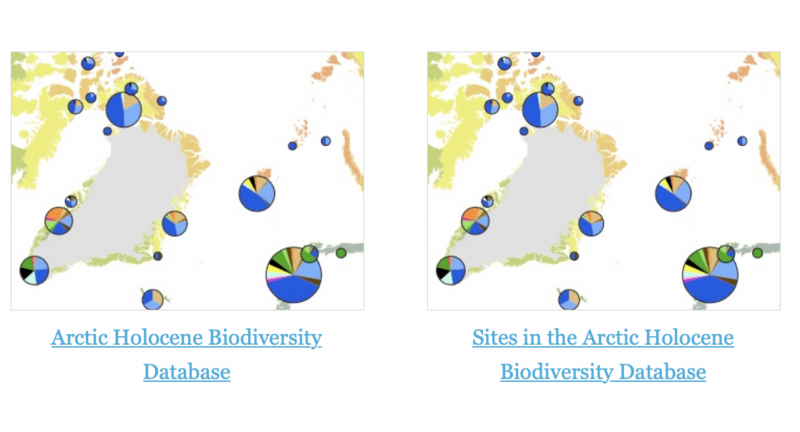A major CHARTER project deliverable is now live! The Arctic Holocene Biodiversity Database (AHBD) is an evolving metadata database of time-series biodiversity metrics covering the last 11,750 years in the Arctic region. T
The academic underpinnings of the map were outlined in a 2022 CHARTER publication (What evidence exists for temporal variability in Arctic terrestrial and freshwater biodiversity throughout the Holocene? A systematic map protocol). In the article, the authors outline the challenges and importance of understanding how biodiversity in the Arctic tundra biome is responding to rapid environmental changes, particularly warming. Increased air temperatures, changing weather patterns, and shifts in tundra vegetation are having wide-ranging ecological effects on birds, mammals, and insects in the region. Long-term ecological data is essential to understand the direction and rate of change in Arctic biodiversity. The authors suggest that relying solely on contemporary ecological research the full picture is not captured and that historical data and time-series analyses are crucial for predicting and understanding these changes.
Until now, a comprehensive database for centennial-scale variability in Arctic biodiversity has been lacking and that such a dataset is essential to refine models, identify evidence gaps, assess data quality, and prioritize research efforts.
A database is one thing, but this team have created a visual map based interface to access the data (many tens of thousands of records and counting).The resulting map and data addresses these challenges by quantifying uncertainties, identifying evidence gaps, assessing data quality, and highlighting unutilized data sources in the field of palaeoecology and archaeology.
Overall, this map visualises and stresses the need for a comprehensive and systematic approach to understand how Arctic biodiversity is changing over long timescales and to guide conservation efforts in the region.
Launch the map here

Reference: Martin, A.C., Assmann, J.J., Bradshaw, R.H.W., Kuoppamaa, M., Kuosmanen, N.I., Normand, S., Speed, J.D.M., Macias- Fauria, M., 2022. What evidence exists for temporal variability in Arctic terrestrial and freshwater biodiversity throughout the Holocene? A systematic map protocol. Environ Evid 11, 13 (2022). Access online

